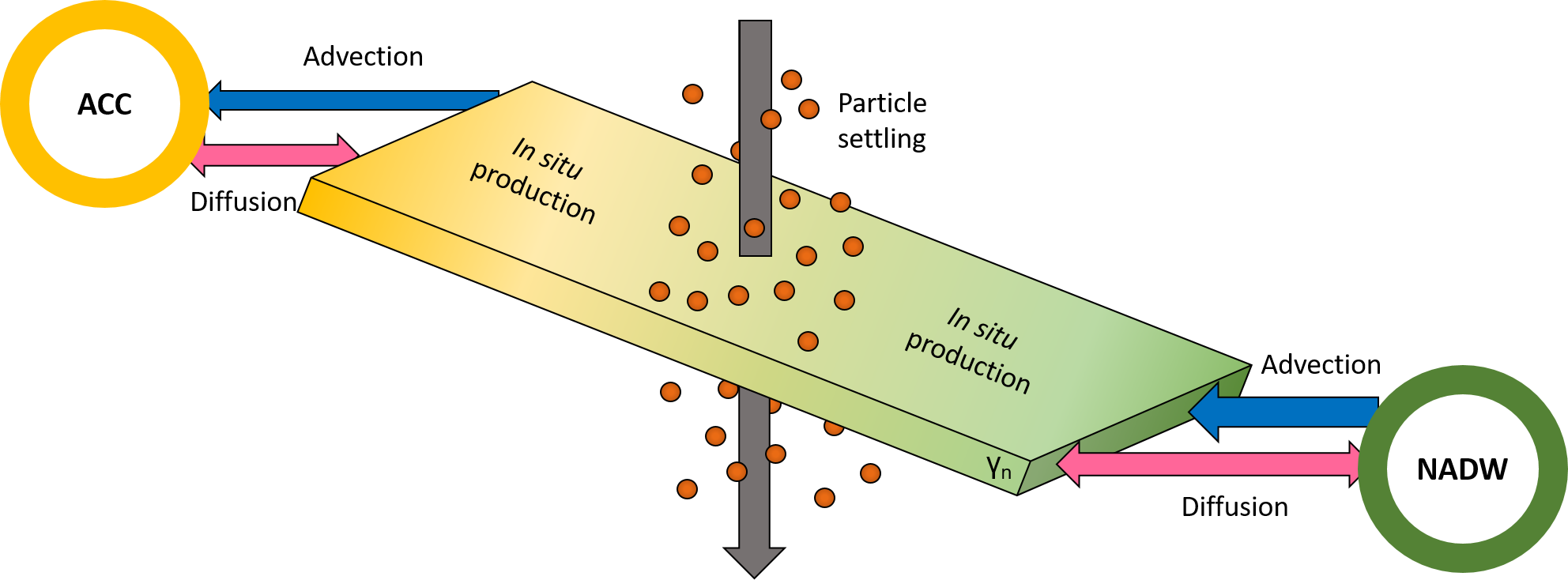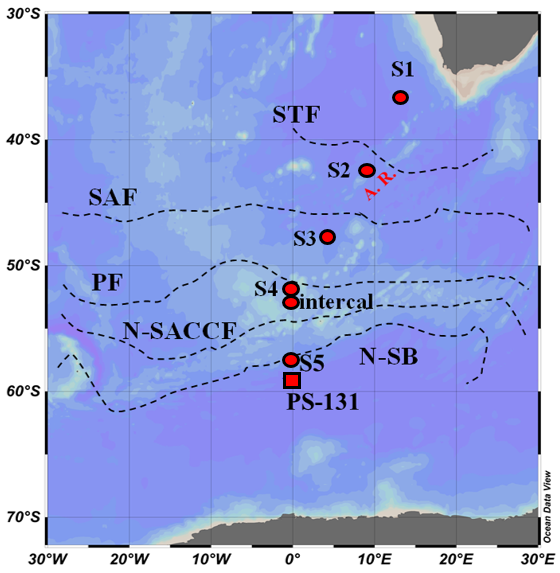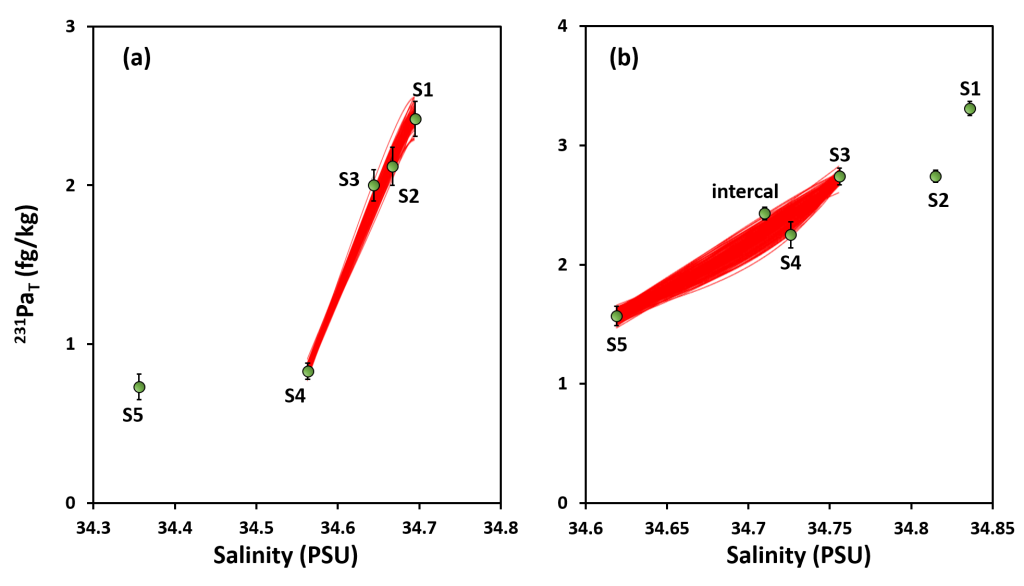Protactinium-231 budget of the Atlantic sector of Southern Ocean
Levier and colleagues (2023, see reference below) analysed dissolved and particulate Protactinium-231 (231Pa) in samples collected as part of the BONUS GoodHope GEOTRACES GIPY4 cruise in the SE Atlantic sector of the Southern Ocean. They established a first direct estimate of the 231Pa partition coefficient between suspended opal and seawater (~ 1.42 ± 0.55 × 106 g/g). They used this data to simulate the particulate 231Pa concentration based on the dissolved Pa fraction and the opal concentration. The authors demonstrate that adding a new parameter (231Pa) to the isopycnal advection-diffusion-scavenging model built for thorium isotopes along the same section (Levier, et al, 2021) leads to reduction by half of the estimated uncertainties among the different transport parameters of the model…



References:
Levier, M., Roy-Barman, M., Foliot, L., Dapoigny, A., & Lacan, F. (2023). Distribution of Pa in the Atlantic sector of the Southern Ocean: Tracking scavenging during water mass mixing along neutral density surfaces. Deep Sea Research Part I: Oceanographic Research Papers, 194, 103951. Access the paper:10.1016/j.dsr.2022.103951
Levier, M., Roy-Barman, M., Colin, C., Dapoigny, A. (2021). Determination of low level of actinium 227 in seawater and freshwater by isotope dilution and mass spectrometry. Mar. Chem. 233, 103986. Access the paper: 10.1016/j.marchem.2021.103986
